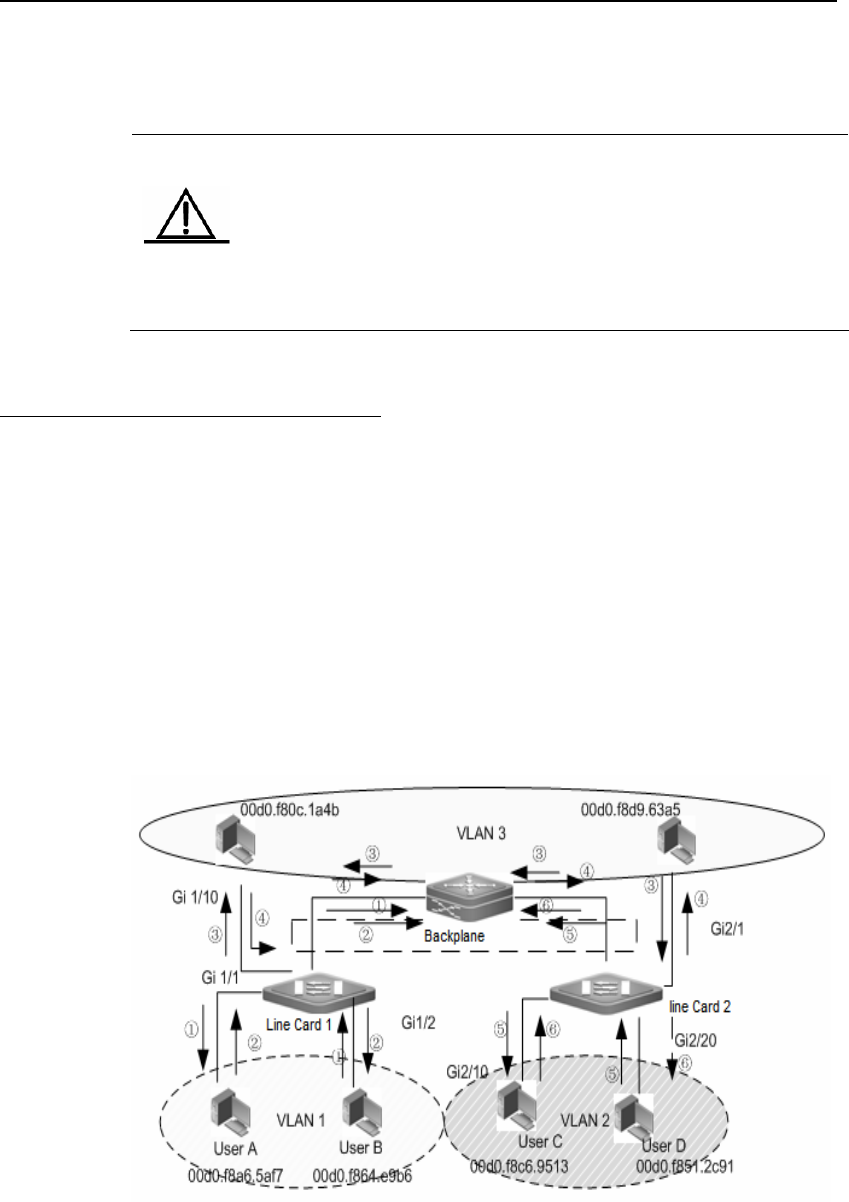
DES-7200 Configuration Guide Chapter 2 MAC Address Configuration
2-9
Decrease the System Performance: The system performance is decreased
and it needs the extra synchronous expenditure because the line card
adopts the non-dispersive MAC address learning mode.
Caution
With the dynamic MAC address synchronization enabled, every
time the address learning or address aging occurs, the
corresponding operation is executed by the switch. Frequent
address learning or address aging in a short time consumes a lot
of CPU resources, which results in the high utilization of CPU. The
administrator shall enable this function prudently.
2.1.3.2 Dispersive MAC address
learning mode
In the uniform mode, all line cards join the address learning in all VLANs. Even
though a port in a specified VLAN is only distributed on one line card, other line
cards still learns the address when receiving the packet from this specified
VLAN.
In the dispersive mode, the line card is responsible for learning the address only
in the VLAN where the port that is on this line card is in, not learning the
address in other VLANs.
In the VLAN 1, all ports are on the line card 1. In the VLAN 2, all ports are on the
line card 2. In the VLAN 3, all ports are on the line card 3.
Figure-11 Separated MAC address Learning Forward
If the address tables of the line card 1 and line card 2 are null, the UserA and
the UserB exchanges the packets in VLAN1, the UserC and the UserD
exchanges the packets in VLAN2, the UserE and the UserF exchanges the
packets in VLAN3. The following shows the MAC address table learned by the
switch:


















